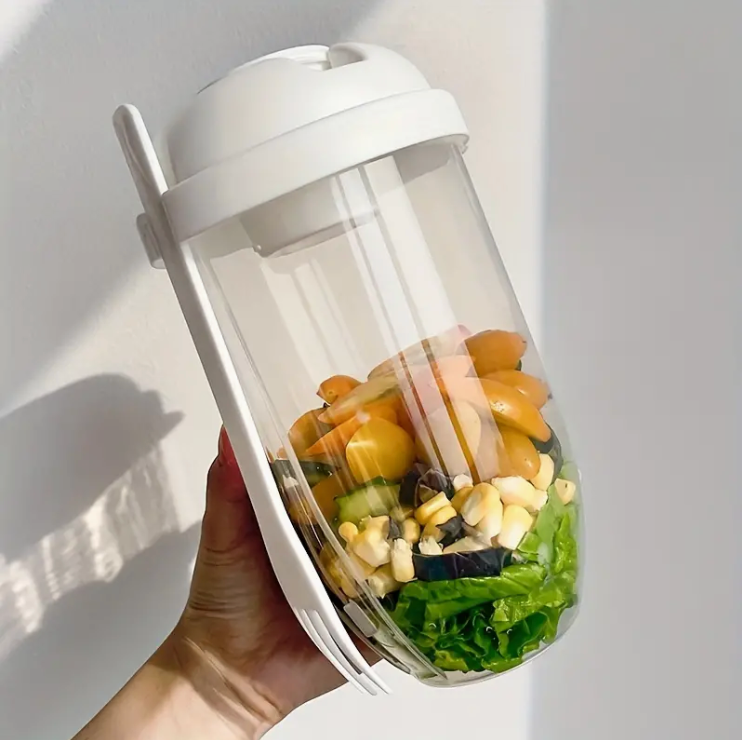Polycystic Ovarian Syndrome - How do I manage it?
Body Plot • September 7, 2020
Polycystic ovarian syndrome, also known as PCOS, is estimated to affect 1 in 10 women, who are of childbearing age, in the UK, affects how the female reproductive hormones work and can have a huge impact on one's quality of life.
In the normal female reproductive system, the ovaries make the egg that is released each month as part of a healthy menstrual cycle. However, for PCOS sufferers, the egg may not develop as it should or it may not be released during ovulation as it should be which can cause cysts on the ovaries, imbalanced menstruation (missed periods or prolonged periods), and can affect fertility.
Whilst we are still unsure as to why someone gets PCOS, we do know that you are at a higher risk of PCOS if you are obese or have a mum/sister/aunt who suffers from PCOS.
Exact causes: High levels of androgen: androgens are also called 'male hormones' and control the development of male traits such as hair growth and male-pattern baldness. Women generally produce small amount of androgens however is significantly higher, in women with PCOS. This higher level can prevent the ovaries from releasing an egg (ovulation) during each menstrual cycle and can cause extra hair growth and acne, two signs of PCOS.
High levels of insulin: Insulin is a hormone that controls how the food we eat is converted into energy. Insulin resistance is when the body does not respond normally to insulin. The insulin, in the blood, becomes higher than normal. Many women with PCOS have insulin resistance, which can aid to greater weight gain. This is particularly common in women who are overweight already and don't make enough time to get in physical activity and/or do not focus on good nutrition.
How to diagnose PCOS:The presence of two of the following three criteria is often enough for health care professionals to diagnose PCOS:
1. The presence of several fluid-filled sacs which surround the eggs in our ovaries
2. Eggs being irregularly released from our ovaries
3. Increased activity or increased amount of the hormone group androgens (including testosterone and androstenedione)
How can you cure or manage PCOS?
Unfortunately, there is no cure for PCOS yet however, there are many ways you can decrease or eliminate PCOS symptoms and start feeling better.
1. Eat more fibre.
High-fibre foods can help combat insulin resistance by slowing down digestion and reducing the impact of sugar on the blood. We know that the recommended intake of fibre is 25-30g for women and in this country, women eat about half of that recommended intake. Fibre can be found in foods that grow from the ground, particularly those that are more complex in nature. Examples: bulgar wheat, oats, cruciferous vegetables such as broccoli and cauliflower, legumes such as kidney beans and chickpeas, lentils such as mung and your fruits and vegetables. There are also some fantastic lentil spaghettis that you can buy from your local health shops such as Holland and Barratt and wholegrain bread. Turn around the back of the food and look at the quantity of fibre per serving - this will help you see how far it will help you in reaching that 30g.
2. Eat foods that are lower in hormones.
Animal products tend to be higher in hormones down to both naturally occurring hormones present in the animal that you are consuming and also the hormones that are externally injected into the animal to make it grow faster, grow bigger, etc. These may not be ideal when you have a hormonal imbalance. Try and opt for organic and foods that contain little to no hormones.3. Don't be afraid of fats - just limit your saturated fat, trans-fat, and hydrogenated fat intake.
Keep saturated, hydrogenated fats, and trans fats foods to a minimum. Saturated fats such as full-fat cheese and full-fat milk and trans fats such as fried chips and frozen pizzas can raise your levels of estrogen which can negatively impact menstruation, PCOS and can lead to further weight gain. Try and stick with hormone-healthy fats such as nuts, fish, seeds, avocado, quinoa, and tofu. The Omega 3 founds in these foods helps to regulate hormones, reduce your body’s sensitivity to prolactin, (a hormone which can suppress ovulation,) increase blood flow to the uterus, increase egg white cervical mucus which helps sperm reach the egg and helps to regulate your menstrual cycle.
4. Eat foods rich in antioxidants
People with PCOS have been shown to have higher levels of oxidative stress. Therefore eating foods that are rich in antioxidants can be really beneficial. Foods that are higher in antioxidants: blueberries, goji berries, and nuts. We have an entire blog on antioxidants so do have a look at this!
5. Limit your dairy consumption.
Whilst there have been no conclusive studies due to the lack of randomised and controlled studies been done in this area, one might think about looking at the way the body works and decide to limit dairy consumption when they have PCOS. Insulin growth factor-1, found in dairy, is a naturally occurring hormone that has a similar molecular structure to that of Insulin. It also mimics the role of insulin and has insulin-like activity. Research has shown that IGF-1 levels increase by 10% in adolescent girls from just one pint of milk a day. Women with PCOS have higher than normal levels of IGF-1. Women with PCOS have higher than normal levels of natural IGF-1 therefore, having dairy can raise these levels further. The positives are that if you do eliminate or limit dairy, you can still obtain your calcium from plenty of foods such as plant-based fortified milk, broccoli, leafy greens, tofu, and legumes.
6. Limit high-glycemic index foods.
Consumption of refined carbohydrates has been shown to affect PCOS symptoms therefore controlling this may help to manage the symptoms of PCOS. These types relate to their glycemic index (GI). GI is a relative ranking system of carbohydrate foods. It relates to how quickly they raise our blood sugars after consumption. Foods that are lower on the glycemic index are ones that cause our blood sugar levels to rise slowly contrary to foods that are higher on the glycemic index, which causes our blood sugar levels to rise quickly. Foods that are lower on the glycemic index also tend to be higher in fibre. Examples are legumes, lentils, berries, whole grain bread, lentil pasta, oats, bulgar wheat, and nuts. Foods that tend to be higher on the glycemic index are foods such as white bread, white rice, dried fruits, fizzy drinks, sweets, chocolates, ice creams, cakes, and biscuits. 7. Lose weight
Studies show that Obese PCOS patients show more difficulty in losing weight by exercise than lean PCOS patients. Learning this, one might be tempted to lose weight quickly to get into better shape. Emphasis should be on health. By losing weight quickly, you might be doing more harm to your body and in particular, your hormones. Focus on losing weight gradually (roughly 0.5lb to 2lb a week) through sustainable and healthy lifestyle changes and a very balanced diet. Speak to Body Plot or your local dietician for help if you need it.8. Move more
Finally, our favourite tip is to get moving. Studies show that the more you exercise, particularly LISS training (low impact steady state training) such as walking and resistance/weight training can be extremely beneficial in increasing one's insulin sensitivity and helping you become less insulin resistant. Movement also helps you lose weight, boosts your endorphins, and helps you metabolise carbohydrates much more effectively. For further help, speak to your clinician. However please remember to not despair, there is help out there. Like all things that are good in life, there is never a magic pill, so focus on the above and start your journey to feeling healthier and happier with PCOS being your friend, not your enemy.

This recipe is such a delicious and nutritious take on pizza! If you've not enjoyed tofu previously, this recipe will change your opinion. Want to have your cake and eat it too? Try: have your pizza and eat it too! Key benefits: - High in Protein - Plant-centric with over 8 vegetables in this one dish - Can be easily made Vegan - Great for lowering cholesterol - Great for menopausal women Ingredients: - 1 block of Tofu [we used basil tofu] - Homemade or store bought tomato sauce - Protein cheese [Eat Lean or LIDL high protein] or Vegan Mozzarella - Vegetables of choice, we used: Aubergines, courgettes, sweetcorn, tomatoes, mushrooms, onions & red peppers - Lower in fat pesto Method: Drain tofu according to instructions on the pack. Cut tofu lengthways - this should result in approximately 3-4 tofu bases. Add these to a oil brushed air fryer or oven and bake at 190 degrees for 12 minutes, turning halfway. Finely dice the vegetables. Top with sauce, vegetables, cheese and pesto and add back into the air fryer or oven for a further 5 minutes until melted. Serve with a side salad and enjoy!

This is the easiest soup ever and ticks all the boxes being: High in fibre, High in protein, Rich in Vitamin C (making it super immune-supporting) and Rich in minerals too.Not only is it full of nourishment but it is an easy win for a delicious Autumnal mid-week dinner! Before we dive into the recipe, let me break down the protein content for you: 20g protein per 2 slices of Jasons protein sourdough 10g protein per bowl of soup 10g from 2 slices of @eatlean cheese And that’s not even including any extra grams of protein from the veggies! So that's a whopping 40g of protein from soup and bread! Ingredients: 2 red onions 4 tomatoes 1 garlic bulb 1 butternut squash 300g silken tofu Celtic Salt Pepper Asofoetida Turmeric 2 slices of Jason’s protein sourdough 2 slices of LIDL or Eatlean protein cheese Method: Chop all the veg, aside from the tomatoes, and roast in the oven with the garlic for 60 minutes at 190 degrees. Add in the tomatoes for the last 30 minutes. Add the roasted veg to a pan and add the tofu and blend with a hand blender. Add turmeric, asofoetida, salt, pepper and stir. I prefer thicker soups. To make the consistency thinner, simply add soya milk and give it a stir. Meanwhile add 2 slices of Jason’s protein sourdough to the grill. Once partially browned, add 1 slice of LIDL or Eatlean Protein cheese to each slice and add back to the oven. Serve your soup and bread!

Happy National Relaxation Day! Today, on August 15th, we have a unique opportunity to pause and reflect on the importance of relaxation in our daily lives—especially in the workplace. At Body Plot, we understand that in demanding professions where the pace is relentless, taking time to relax can feel like a luxury. However, it’s actually an essential part of maintaining a healthy, productive workforce. The Case for Relaxation in the Workplace In numerous working industries, stress often comes with the territory. Whether it’s meeting tight deadlines, managing high-stakes cases, or simply coping with the fast-paced environment, the pressure can be overwhelming. But chronic stress doesn’t just impact individual wellbeing—it also affects organisational health. High levels of stress can lead to increased absenteeism, higher turnover rates, and decreased productivity. This is where the power of relaxation comes into play. When we make space for relaxation, we’re not just improving our mental and physical health; we’re also fostering a more resilient and effective workplace. Here’s how: Reducing Absenteeism: Regular relaxation helps to alleviate stress, which in turn can reduce the risk of stress-related illnesses that often lead to absenteeism. Encouraging your team to take breaks and practice mindfulness can make a significant difference. Improving Retention: Employees who feel supported in their wellbeing are more likely to stay with an organisation. By promoting a culture that values relaxation and self-care, you can improve employee satisfaction and reduce turnover. Boosting Productivity: It might seem counterintuitive, but taking time to relax can actually enhance productivity. A relaxed mind is more focused, creative, and efficient. Regular breaks and wellbeing practices help employees return to their tasks with renewed energy and clarity. Celebrating National Relaxation Day in Your Workplace doesn't just have to be national day - let's embed it! National Relaxation Day is a perfect reminder that relaxation isn’t just a personal practice—it’s a professional priority. Encourage your team to embrace this daily by taking meaningful breaks, practising mindfulness, and participating in activities that promote relaxation. Consider hosting a wellbeing workshop or sharing tips on how to incorporate relaxation into the workday. Let today be the start of a new approach to workplace wellbeing—one that recognises the value of relaxation as a key component of success.

In the hustle and bustle of the modern workplace, the emphasis on productivity often overshadows the crucial aspect of employee wellbeing. Today, we explore a compelling question: Should companies give employees time off to work out during the day? The Case for Midday Workouts At Body Plot, we believe in a holistic approach to wellbeing, encompassing both physical and mental health. Allowing employees to exercise during the workday can yield remarkable benefits: Boosted Mental Health Exercise is a natural stress reliever. It reduces anxiety, alleviates depression, and enhances overall mental well-being. Employees who exercise regularly are likely to be happier, more relaxed, and more resilient to workplace stress. Reduced Absenteeism Healthier employees are less prone to taking sick days. Regular exercise strengthens the immune system and reduces the likelihood of minor illnesses, leading to fewer absences and more consistent performance. Increased Productivity Contrary to the belief that time spent away from the desk is time wasted, studies show that physical activity can enhance cognitive function, improve concentration, and boost energy levels. Employees returning from a workout break often exhibit heightened focus and efficiency, translating to better overall productivity. While the benefits are clear, implementing a workout-friendly policy requires thoughtful consideration: Best Practices for Success Flexible Scheduling Offer flexible hours to allow employees to exercise at times that suit them best. This could mean extended lunch breaks or flexible start and end times. On-Site Facilities If feasible, provide on-site fitness facilities or partner with local gyms to make it easier for employees to access workout opportunities without significant time away from work. Encouragement and Incentives Foster a culture of health and wellness through incentives, such as fitness challenges or rewards for regular exercise, to motivate employees to stay active. Comprehensive Wellbeing Programs Implement a holistic wellbeing program that includes fitness, nutrition, and mental health resources, addressing all aspects of employee wellbeing. At Body Plot, we advocate for a balanced approach that integrates well being into the workday. By supporting employees' physical and mental health through midday workouts, companies can create a more productive, engaged, and loyal workforce. The key lies in thoughtful implementation and a commitment to fostering a culture of health and wellness. Stay well and keep thriving!

As we embark upon the National South Asian Heritage Month today, it's an opportune moment to reflect on the importance of mental health awareness within the South Asian communities in the UK. In many South Asian cultures, mental health issues are often stigmatised, viewed as a sign of weakness or a lack of resilience. This stigma is deeply rooted in societal norms and traditional beliefs, which can discourage individuals from seeking help. The fear of judgement and ostracisation can lead to silence, suffering, and a significant impact on one's quality of life. At Body Plot, we believe in fostering well being for all, and understanding cultural nuances is a crucial part of this mission. Mental Health affects everyone, but there can be certain cultural nuances that make some communities more vulnerable. For instance, South Asian individuals may face unique challenges such as intergenerational conflicts, the pressure to conform to cultural expectations, and the balancing of dual identities, all of which can exacerbate mental health issues if not properly addressed. Lack of access not only affects individuals but also has wider implications for their families and communities. Lack of awareness can include language barriers, cultural misunderstandings, and a lack of culturally competent healthcare professionals. If lack of awareness continues, it can contribute to absenteeism, reduced productivity, and higher turnover rates in the workplace. Our Commitment at Body Plot At Body Plot, we are committed to helping organisations create a supportive and inclusive wellbeing agenda. Here’s how we can support your organisation in addressing mental health challenges within the South Asian community: Culturally Sensitive Workshops: We offer workshops that are tailored to understand and respect cultural differences, helping to break down the stigma and encourage open conversations about mental health. Training for Leaders: Equip your management team with the skills to recognise signs of mental distress and understand the unique challenges faced by South Asian employees. Resource Accessibility: Ensure that mental health resources are accessible in multiple languages and consider cultural sensitivities. Taking Action Promoting mental health awareness and access to care is not just a responsibility; it’s an opportunity to enhance the wellbeing of your entire organisation. By creating a supportive environment, you can help your South Asian employees feel valued and understood, leading to improved overall wellbeing, reduced absenteeism, and increased productivity. This National South Asian Heritage Month, let's take a stand against the stigma surrounding mental health. Together, we can create a more inclusive and supportive workplace for everyone. The Body Plot Team --- Stay tuned for more updates and insights on wellbeing in the workplace. Follow Body Plot for the latest news and tips on promoting health and productivity within your organisation.

One of the most asked questions we get at Bodyplot is, "How can we optimise wellness with simple breathing techniques?" What you'll learn from Body Plot is that wellness through breathing is as unique as the individuals practising it. Our well-being is influenced by many factors, from physical health and lifestyle choices to mental health and work environment. Here’s a fantastic breathing hack you can easily integrate into your daily routine: the 4-4-4 method! The 4-4-4 method, also known as box breathing, is a simple yet powerful technique to calm the mind and body. It involves inhaling, holding, and exhaling the breath in equal counts of four. This technique helps reduce stress, enhance focus, and promotes overall wellness. How to Practise the 4-4-4 Method: 1. Find Your Spot: Sit or lie down comfortably. Keep your back straight and shoulders relaxed. 2. Inhale Deeply: Breathe in through your nose for a count of four. Feel your lungs fill up. 3. Hold Steady: Hold your breath for a count of four. Let the oxygen saturate your body. 4. Exhale Slowly: Exhale through your mouth for a count of four. Release all the tension. 5. Repeat and Relax: Continue this cycle for five minutes or more. Focus on your breath and stay present. Optimising wellness with the 4-4-4 method is all about understanding and supporting your unique needs. At Body Plot, we believe that a happy and healthy life thrives on personalised care. A thriving you is one who feels valued and cared for. For customised wellness workshops, contact us at Body Plot. Let's breathe better together!

Ingredients ½ cup rolled oats - use GF, if necessary 2 Tbsp chia seeds 1 tsp orange zest 1 Tbsp golden raisins (sultanas) ½ tsp pure vanilla extract 1 cup homemade coconut milk or store-bought light coconut milk* 200g greek yogurt or soya yogurt BERRY COMPOTE: ¾ cup blueberries - I used frozen ¾ cup blackberries - I used frozen 1 tsp coconut sugar TO SERVE: 2 Tbsp almond or hazelnut butter 2 tsp coconut flakes 1 tbsp pumpkin seeds Method: OATS: Combine all the oat ingredients in a your Body Plot Jar. Give the mixture a good stir and let it sit in the fridge overnight, or for at least 2 hours. 2. BERRY COMPOTE: Add a splash of water, frozen blueberries, blackberries and coconut sugar to a small pan. Cook over medium heat for about 10 - 15 minutes. Mash the berries with a wooden spoon or a fork, they should fall apart quite easily. If not, cook them for a few more minutes. Let the compote cool at room temperature. 3. TO SERVE: Add the berry compote on top of the oats. Drizzle on your nut butter and top with coconut flakes, fresh berries and 1 tbsp pumpkin seeds which can be stored in the centre pot of your jar.

Ingredients: HONEY MUSTARD DRESSING: 2 tbsp olive oil 2 tbsp vinegar 1 tbsp mustard 1 tsp maple syrup / honey 1 tsp cumin seeds Salt and pepper to taste SALAD: 1/2 cup cucumber, diced 5 baby tomatoes, halved 1/4 cup steamed beetroot, diced 1/2 small red onion, diced 1/2 cup red peppers, diced 4 tbsp carrots, grated 100g chickpeas PROTEIN: 4 scrambled egg whites / 100g scrambled tofu, 100g lighter feta 1 tbsp sunflower seeds Method: DRESSING: Make your dressing and add it to the centre compartment of your Body Plot Jar. SALAD 2. Prepare your vegetables and layer this in your jar, one ingredient at a time. Feel free to add any additional vegetables that you like. 3. Top with your choice of protein before firmly shutting your Body Plot jar. TO SERVE: 4. When ready to eat, pour the dressing from the centre compartment over your salad followed by the seeds and serve cold.

Thai green curries are one of our favourite dishes and is so easy to make. It's also a deliciously balanced meal and is a favourite for all of our Body Plotting families. Ingredients: Sliced carrots Shiitake Mushrooms [or any is fine] 1 cubed Aubergine Mangetout Pak choi Tenderstem broccoli 1 Red bell pepper Shallots 1 red chilli 4 cloves garlic 1 thumb piece ginger 1/2 lime Bunch of coriander 1 tsp coconut oil 1 can light coconut milk 1 block of tofu or your choice of protein 3 tbsp Thai green curry paste Method: In a nonstick wok pan add coconut oil. Once melted, add the sliced onions and saute. Meanwhile, cube tofu and add to an air fryer for 15 minutes to crisp up! Add the garlic and ginger and continue to saute. Add the remaining vegetables and continue to stir on high heat for 2-3 minutes. Add the coconut milk, thai green paste and cubed tofu or your choice of protein and stir. Let this simmer for as long as you can but a minimum of 10 minutes. Before serving, stir in coriander and lime. Garnish with red chillies and serve!

Pastries typically are high in saturated fat and refined carbohydrates. Check out this quick 15-minute recipe to make a pastry that's higher in protein and contains some Vitamin D too! Ingredients: 1 Jus-roll filo pastry Sliced or diced mushrooms of choice Sliced Eatlean protein cheese Olive spread or butter for brushing Method: Roll out the pastry and pile 4 on top of one another. Using a sharp knife, cut them into three lengthways so the width is about one inch. Top each line with a brush of olive spread, protein cheese followed by mushrooms. Take the top of one line of pastry and fold it into a triangle. Keep folding and repeating until the entire line is wrapped. Brush the butter over to seal the pastry and add to an air fryer for 15 minutes. Serve with some mint greek yogurt or without any dip at all!
